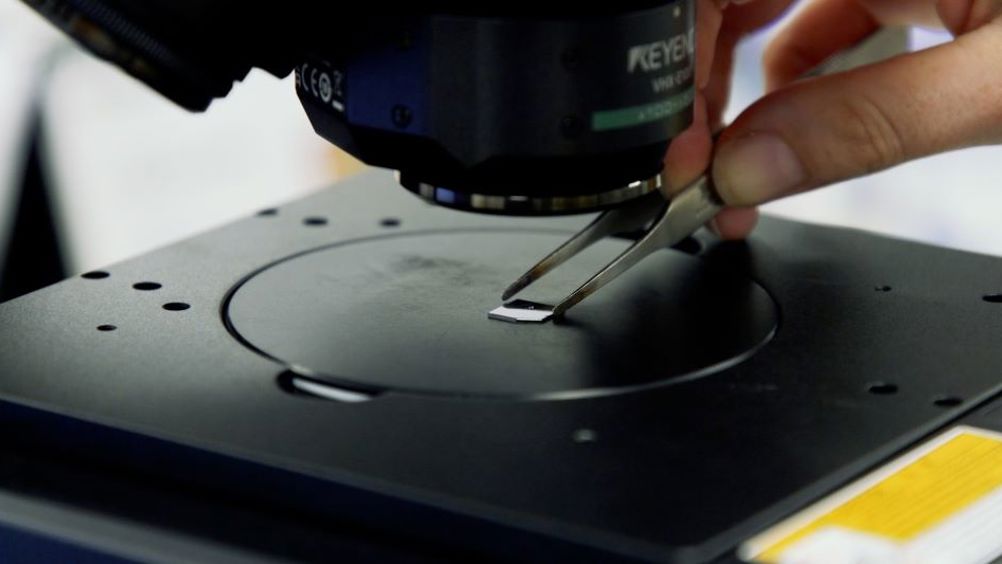Nanotechnology used to create ‘world’s smallest violin’
Loughborough University physicists have used nanotechnology to create what they believe may be ‘the world’s smallest violin’.

The violin is made of platinum and measures 35 microns long and 13 microns wide.
The miniature violin was created as a test project to demonstrate the capabilities of the University’s new nanolithography system, an advanced suite of technology that enables researchers to build and study structures at the nanoscale.
The system will support a variety of research projects aimed at identifying new materials and methods for developing the next generation of computing devices.
“Though creating the world’s smallest violin may seem like fun and games, a lot of what we’ve learned in the process has actually laid the groundwork for the research we’re now undertaking”, said Professor Kelly Morrison, head of the Physics department and an expert in experimental physics.
“Our nanolithography system allows us to design experiments that probe materials in different ways – using light, magnetism, or electricity – and observe their responses. Once we understand how materials behave, we can start applying that knowledge to develop new technologies, whether it's improving computing efficiency or finding new ways to harvest energy.
Register now to continue reading
Thanks for visiting The Engineer. You’ve now reached your monthly limit of news stories. Register for free to unlock unlimited access to all of our news coverage, as well as premium content including opinion, in-depth features and special reports.
Benefits of registering
-
In-depth insights and coverage of key emerging trends
-
Unrestricted access to special reports throughout the year
-
Daily technology news delivered straight to your inbox










Gigacasting: A Breakthrough in EV Manufacturing
Lots of interesting developments here. Though the phrase "‘The Vault’ – an encased system full of magic that is easily scalable." is not...